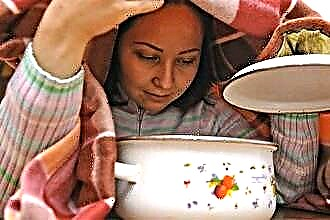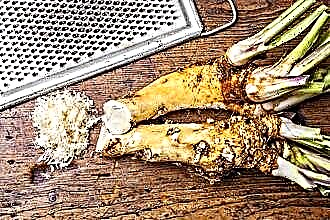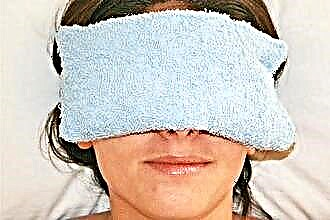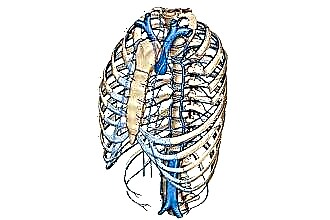Given the presence of a large number of modern drugs, primarily antibiotics, as well as the availability of medical care, people with sinusitis are increasingly less likely to resort to treatment with alternative methods. However, the treatment of sinusitis with herbs is still popular, especially at the initial stage of the disease or with an uncomplicated course of the disease. Herbs for sinusitis are much safer than pharmacological drugs, and have less negative impact on all systems of the human body.
Features of sinusitis herbal therapy
 With sinusitis, herbal treatment is auxiliary in relation to drug therapy and is aimed mainly at the following purposes:
With sinusitis, herbal treatment is auxiliary in relation to drug therapy and is aimed mainly at the following purposes:
- reduction of the general intoxication of the body, which is a consequence of the presence of an inflammatory process;
- increasing the effectiveness of traditional treatment with chemical drugs, as well as reducing the severity of side effects from them;
- removal of local manifestations of inflammation;
- increased general and local immunity;
- prevention of recurrence of the disease, especially for chronic sinusitis;
- replenishment of the patient's body with the necessary amount of vitamins that contribute to recovery;
- improving the general well-being of the patient and improving the quality of his life.
Phytotherapy has a softer and sparing effect, therefore it can be used for a long time without much harm to the patient, which is inaccessible to most of even the most modern medicines. Most often, herbs for sinusitis are used in such cases:
- Long-term treatment of chronic sinusitis during remission.
- Prevention of frequent exacerbations of sluggish sinusitis.
- Auxiliary therapy for conservative or surgical treatment of maxillary sinusitis in acute or purulent form.
The use of all popular recipes is best coordinated with the attending otolaryngologist so as not to harm. It is necessary to pay attention to the possibility of the simultaneous use of chemicals and medicinal herbs, as well as the individual intolerance of a particular plant.
Traditional medicines based on medicinal plants can be taken in different ways. To do this, use inhalations, nasal drops, taking infusions inside, rinsing and compresses.
Medicinal plants for inhalation
Inhalation of vapors of medicinal plants allows you to direct their beneficial properties directly to the site of inflammation.
 This helps to reduce tissue swelling, achieve liquefaction of mucous accumulations and improve the outflow of exudate from the sinuses, and restore nasal breathing. Inhalation can be carried out using the usual steam method or using a special Nebulizer device.
This helps to reduce tissue swelling, achieve liquefaction of mucous accumulations and improve the outflow of exudate from the sinuses, and restore nasal breathing. Inhalation can be carried out using the usual steam method or using a special Nebulizer device.
It is not recommended to use solutions prepared from plants at home in the Nebulizer, as large suspended particles can damage the device.
However, for this type of aerosol treatment, alcoholic tinctures of biologically active plants, which are sold in pharmacies, are well suited:
- Malavit. A dietary supplement based on a number of minerals and plants (birch and pine buds, thyme, calamus, chamomile, immortelle, sage, peony, celandine, plantain). It has antibacterial, analgesic and antiseptic effects. It is mixed with a saline solution in a ratio of 1:30. Inhaled three times a day, 3 ml.
- Rotokan. An alcohol infusion of calendula, chamomile and yarrow with a good anti-inflammatory effect. Diluted with sodium chloride 1:40, inhaled about 4 ml of the solution. A solution of alcoholic calendula is used in the same way.
- Eucalyptus. Relieves inflammation in the upper respiratory tract. 15 drops of alcohol tincture are added to a glass of saline solution, inhalation is carried out three times a day, 3 ml each. Contraindicated in cases of bronchial asthma and other bronchial problems.
- Sinupret. Phytopreparation based on gentian root, verbena, elderberry and primrose. It has a mucolytic and decongestant effect, increases immunity, helps to cleanse maxillary cavities from stagnant exudate. The aerosol is inhaled three times a day. Diluted with saline depending on the patient's age: 1: 3 - up to 6 years, 1: 2 - up to 16 years, 1: 1 - for adults.
However, the nebulizer is quite expensive, therefore it is more often used in medical institutions. The majority of the population prefers to treat sinusitis with the proven method - steam inhalation. When preparing them, you can use dried plant materials.
Here are some common recipes:
 10 g of plantain leaves, 5 g of yarrow and immortelle flowers are mixed. 2 tablespoons of this collection are poured with a glass of boiling water, infused for an hour and filtered. For one inhalation, half of the resulting infusion is enough.
10 g of plantain leaves, 5 g of yarrow and immortelle flowers are mixed. 2 tablespoons of this collection are poured with a glass of boiling water, infused for an hour and filtered. For one inhalation, half of the resulting infusion is enough.- 15 g of chamomile flowers, 10 g of calendula flowers and 5 g of meadow geranium herb are infused for 1 hour in 200 ml of boiling water. After straining, it is used for inhalation, 50 ml is enough for one procedure.
- 15 g of plantain leaves, 10 g of yarrow and 5 g of walnut leaves are brewed and used in the same way as the previous recipe.
In addition to fees, you can breathe steam with decoctions of individual herbs, such as St. John's wort, lemon balm, mint, chamomile, calendula.
They are prepared according to a recipe similar to the collection: for a glass of boiling water 1-2 tablespoons of dried crushed raw materials, you can use it after half an hour - an hour. As a rule, they breathe for 5 minutes daily, the whole course takes about one week. To enhance the effect, experts recommend that children and adults drink a cup of herbal tea before starting the procedure.
Often, essential oils (tea tree, eucalyptus, clove, pine) are used for steam inhalation, which have bactericidal and anti-inflammatory properties. For inhalation, 4-5 drops added to boiling water are enough, for children the dose is selected individually, starting with 1 drop of oil, since allergic reactions are possible.
Nasal drops based on herbal ingredients and ingestion of infusions
In its action, instillation is similar to inhalation, however, it requires less time and effort to carry out manipulations. The amount of active ingredient is usually higher in drops than in an aerosol, and it does not lose some of its healing properties when exposed to high temperatures:
- A collection of 2 parts of plantain, 1 part of lemon balm and 1 part of peppermint is being prepared. 20 g of the collection are poured with a liter of boiling water and infused for 15 minutes. Then a few drops of eucalyptus essential oil are added. Drip into the nose 2-3 times within 5 days.
- Pinnate callanchoe juice is injected into the nose in 3 drops. The result is a strong sneeze, which actively removes mucus from the nasal cavity.
- Mix the juice from the lower thick leaves of aloe with an equal amount of honey, add a couple of drops of celandine. Dripping three times a day without swallowing, as celandine can be bad for the stomach.
 Cyclamen. It is used with caution because of the poisonous juice of the plant root in high concentration. The forest juice squeezed from the ground cyclamen root is diluted with boiled water (1: 4 or 1: 8, depending on the patient's perception) and instilled into the patient lying on his back, 2-3 drops in each nostril. After a short time, active secretion and sneezing begin. Side effects are possible: increased sweating and an increase in body temperature. If a positive effect is noticeable after the first procedure, then it can be repeated in a couple of days.
Cyclamen. It is used with caution because of the poisonous juice of the plant root in high concentration. The forest juice squeezed from the ground cyclamen root is diluted with boiled water (1: 4 or 1: 8, depending on the patient's perception) and instilled into the patient lying on his back, 2-3 drops in each nostril. After a short time, active secretion and sneezing begin. Side effects are possible: increased sweating and an increase in body temperature. If a positive effect is noticeable after the first procedure, then it can be repeated in a couple of days.- Bring together equal parts of celandine, aloe juice and bee honey. Inject 10-12 drops into each nasal passage up to 5 times a day. It is undesirable to swallow the mixture. Has a positive effect in the chronic form of the disease.
- 1 tablespoon of the herbal initial cap should be poured with 0.5 liters of boiling water and then infused for 2 hours. Dripping 5 times a day into each nostril.
Often traditional healers offer complex therapy: take the prepared remedy orally and bury it in the nose. This allows you to use the beneficial properties of plants, both on a general and local level.
The well-known recipes of this direction are used according to the following scheme: half a glass is drunk three times a day, instillation is also carried out three times a day, 1-2 drops. The general course of treatment is approximately 1 month.
- The crushed components of sandy immortelle flowers, plantain leaves and yarrow stems are brought together in equal proportions. 2 tablespoons of the prepared mixture are poured with 500 ml of boiling water, infused for at least 6 hours and filtered.
- Prepare a collection of coltsfoot, calendula, yarrow, peppermint and bird cherry flowers, insist and strain thoroughly.
- 2 tablespoons of the herbal mixture, made up of equal parts of the leaves of dioecious nettle, St. John's wort and viburnum bark, steam in a thermos with the addition of 0.5 liters of boiling water. It is necessary to insist all night. After straining, the product is ready to use.
- Mix 2 parts of medicinal sage, St. John's wort, chamomile, eucalyptus and lavender with 1 part of yarrow and string in a glass or enamel bowl. Pour 2 liters of boiling water and keep for half an hour. After straining, drink half a glass of infusion every 3 hours.
 Grate the washed and peeled horseradish roots on a fine grater. Combine 50 g of the resulting mass with the juice squeezed from 3 lemons. The remedy is taken half an hour after breakfast, half a teaspoon. It helps well in the case of a chronic course of the disease, prevents its exacerbation. The course of treatment is long (about 3 months), it can be repeated after a break in 1-2 weeks.
Grate the washed and peeled horseradish roots on a fine grater. Combine 50 g of the resulting mass with the juice squeezed from 3 lemons. The remedy is taken half an hour after breakfast, half a teaspoon. It helps well in the case of a chronic course of the disease, prevents its exacerbation. The course of treatment is long (about 3 months), it can be repeated after a break in 1-2 weeks.- Reduce 20 g of calendula flowers and St. John's wort with 10 g of poplar buds. Insist 2 hours in half a liter of boiling water. Drink 100-120 ml of warm drink before meals. To improve the taste, you can mix in a little honey.
Compresses on herbal remedies for sinusitis and rinsing the nose
For the treatment of sinusitis in the initial stage, phytoapplications help well, which have a vasodilator, analgesic, anti-inflammatory and antiseptic effect. Compresses can be external or injected directly into the nose using turunda.
- Place rosemary and finely chopped horseradish root in equal proportions in a glass bottle, pour wine vinegar to the top and close tightly with a cork. Shaking regularly, infuse warm for 10 days. Apply a compress on the back of the head and forehead with a mixture from a bottle for up to 15 minutes, and inhale the contents for 5 minutes directly from the neck.
- Prepare a decoction of bay leaves (bring 10-20 g of bay leaves to a boil and cool). In the resulting warm liquid, a napkin is moistened and placed on the face in the projection of the paranasal sinuses. To make the compress cool down more slowly, it is better to cover your face with a linen napkin or towel. After the napkin has cooled, it is wetted again. The procedure is repeated several times.
- Cotton swabs are moistened with a solution of water Sangrivitrin (a mixture of Macleia small-fruited and Macleia heart-shaped) and put in the nose twice a day for 20 minutes. Repeat the procedure for a week.
 Prepare a multicomponent collection of 3 parts of black currant leaves, 2.5 parts of crushed milk, chamomile, lungwort, calendula, 2 parts of juniper needles, horsetail, mallow and blackberry leaves, 1.5 parts of thyme, elecampane, wormwood, mullein and sweet clover. All this is mixed and poured with boiling water for 40 minutes, then filtered through a colander, slightly squeezed out. A warm (about 40 degrees) wet mixture is laid out on the face, previously cleared of fat, in the area of the air cavities and nose, to preserve heat, covered with a towel or kerchief. The compress lasts half an hour, after which it is not recommended to go outside. This phytoapplication is performed every other day or daily, preferably before bedtime.
Prepare a multicomponent collection of 3 parts of black currant leaves, 2.5 parts of crushed milk, chamomile, lungwort, calendula, 2 parts of juniper needles, horsetail, mallow and blackberry leaves, 1.5 parts of thyme, elecampane, wormwood, mullein and sweet clover. All this is mixed and poured with boiling water for 40 minutes, then filtered through a colander, slightly squeezed out. A warm (about 40 degrees) wet mixture is laid out on the face, previously cleared of fat, in the area of the air cavities and nose, to preserve heat, covered with a towel or kerchief. The compress lasts half an hour, after which it is not recommended to go outside. This phytoapplication is performed every other day or daily, preferably before bedtime.
Decoctions of plants are widely used for rinsing the nose. In addition to the direct function of thinning and evacuating mucus, they have a wound healing, regenerating, anti-inflammatory and anti-edema effect. Decoctions of chamomile pharmacy (a teaspoon in a glass of hot water) and a solution of table salt with a decoction of celandine (0.5 teaspoon of salt and 1 teaspoon of celandine) have proven themselves very well.
Contraindications and features of the use of herbal remedies for sinusitis
Before using any herbal preparations, you need to carefully study the features of their effect on the human body. Herbal medicine is contraindicated in such cases:
- Individual intolerance to individual components of the treatment collection.
- The development of allergic reactions after the start of therapy using herbal raw materials.
- Deterioration of the general condition of the patient or deviations in laboratory tests against the background of herbal medicine. In these cases, additional examination and correction of the treatment regimen should be carried out, if necessary, replacing natural drugs with pharmacological ones, with a more pronounced effect.
For pregnant and lactating women, herbal infusions and decoctions can be used only with the permission of a doctor and only if the benefits from their use exceed the harm from possible side effects. You cannot rely only on natural components if the disease is in an acute phase, with purulent discharge and severe symptoms. In chronic sinusitis, it is necessary to monitor the dynamics of the patient's condition during the treatment with phytopreparations and make changes to the therapy.

 10 g of plantain leaves, 5 g of yarrow and immortelle flowers are mixed. 2 tablespoons of this collection are poured with a glass of boiling water, infused for an hour and filtered. For one inhalation, half of the resulting infusion is enough.
10 g of plantain leaves, 5 g of yarrow and immortelle flowers are mixed. 2 tablespoons of this collection are poured with a glass of boiling water, infused for an hour and filtered. For one inhalation, half of the resulting infusion is enough. Cyclamen. It is used with caution because of the poisonous juice of the plant root in high concentration. The forest juice squeezed from the ground cyclamen root is diluted with boiled water (1: 4 or 1: 8, depending on the patient's perception) and instilled into the patient lying on his back, 2-3 drops in each nostril. After a short time, active secretion and sneezing begin. Side effects are possible: increased sweating and an increase in body temperature. If a positive effect is noticeable after the first procedure, then it can be repeated in a couple of days.
Cyclamen. It is used with caution because of the poisonous juice of the plant root in high concentration. The forest juice squeezed from the ground cyclamen root is diluted with boiled water (1: 4 or 1: 8, depending on the patient's perception) and instilled into the patient lying on his back, 2-3 drops in each nostril. After a short time, active secretion and sneezing begin. Side effects are possible: increased sweating and an increase in body temperature. If a positive effect is noticeable after the first procedure, then it can be repeated in a couple of days. Grate the washed and peeled horseradish roots on a fine grater. Combine 50 g of the resulting mass with the juice squeezed from 3 lemons. The remedy is taken half an hour after breakfast, half a teaspoon. It helps well in the case of a chronic course of the disease, prevents its exacerbation. The course of treatment is long (about 3 months), it can be repeated after a break in 1-2 weeks.
Grate the washed and peeled horseradish roots on a fine grater. Combine 50 g of the resulting mass with the juice squeezed from 3 lemons. The remedy is taken half an hour after breakfast, half a teaspoon. It helps well in the case of a chronic course of the disease, prevents its exacerbation. The course of treatment is long (about 3 months), it can be repeated after a break in 1-2 weeks. Prepare a multicomponent collection of 3 parts of black currant leaves, 2.5 parts of crushed milk, chamomile, lungwort, calendula, 2 parts of juniper needles, horsetail, mallow and blackberry leaves, 1.5 parts of thyme, elecampane, wormwood, mullein and sweet clover. All this is mixed and poured with boiling water for 40 minutes, then filtered through a colander, slightly squeezed out. A warm (about 40 degrees) wet mixture is laid out on the face, previously cleared of fat, in the area of the air cavities and nose, to preserve heat, covered with a towel or kerchief. The compress lasts half an hour, after which it is not recommended to go outside. This phytoapplication is performed every other day or daily, preferably before bedtime.
Prepare a multicomponent collection of 3 parts of black currant leaves, 2.5 parts of crushed milk, chamomile, lungwort, calendula, 2 parts of juniper needles, horsetail, mallow and blackberry leaves, 1.5 parts of thyme, elecampane, wormwood, mullein and sweet clover. All this is mixed and poured with boiling water for 40 minutes, then filtered through a colander, slightly squeezed out. A warm (about 40 degrees) wet mixture is laid out on the face, previously cleared of fat, in the area of the air cavities and nose, to preserve heat, covered with a towel or kerchief. The compress lasts half an hour, after which it is not recommended to go outside. This phytoapplication is performed every other day or daily, preferably before bedtime.

